More site potterings; I have now implemented blog post tagging with jekyll-archives and some hacked together template pages. A list of all tags can be found here and each post will have links to it’s own peer group at the bottom of the post in question.
Glass Works: The Late January Update
After my early January update, I had not planned on doing another of these until mid-February (at the earliest!). However, given the current pace of construction and the discovery of several new viewing location, I have had a change of heart.
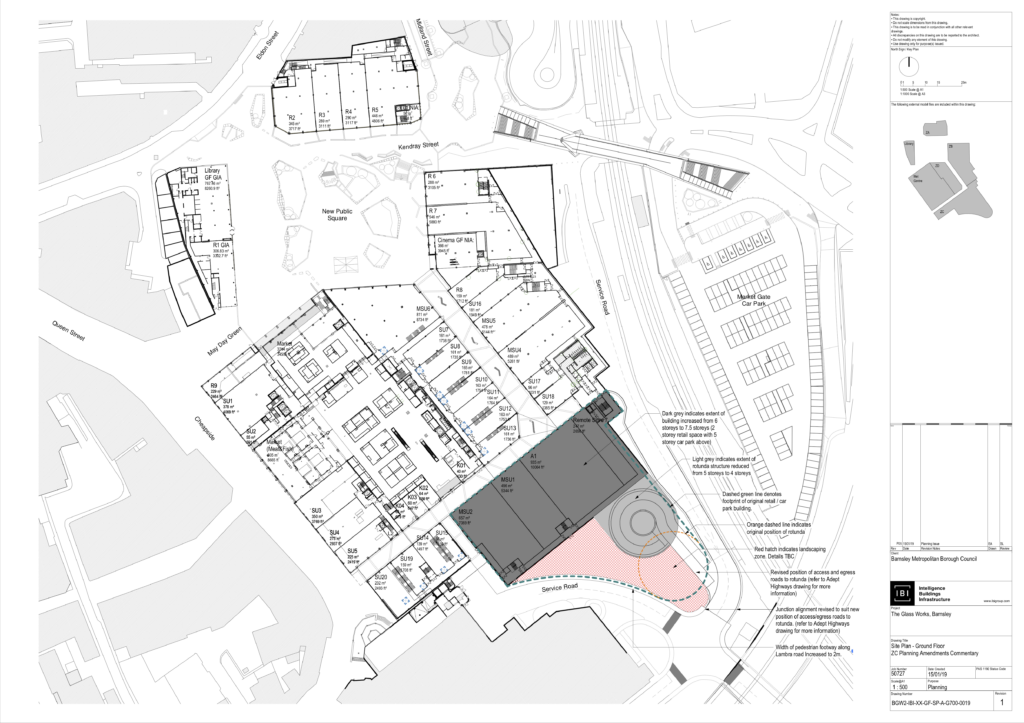
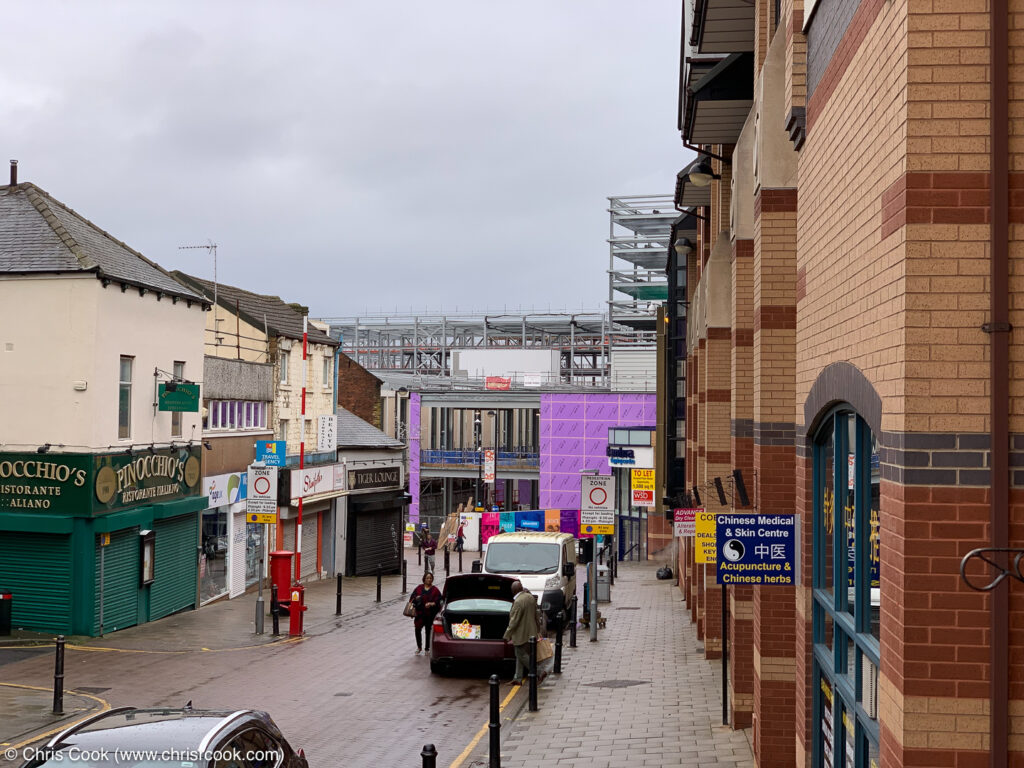
The south-west entrance taken from the Cheapside Hill. Very little has happed over the last month and this unit appears to be waiting for it’s external cladding and glazing to be installed.

The south-west entrance with a better view of the canopy structure that will protect the pedestrian concourse form the elements.

The roof of the previous building taken from the Alhambra Centre’s rooftop carpark. To the right you can see the structure of the new carpark.
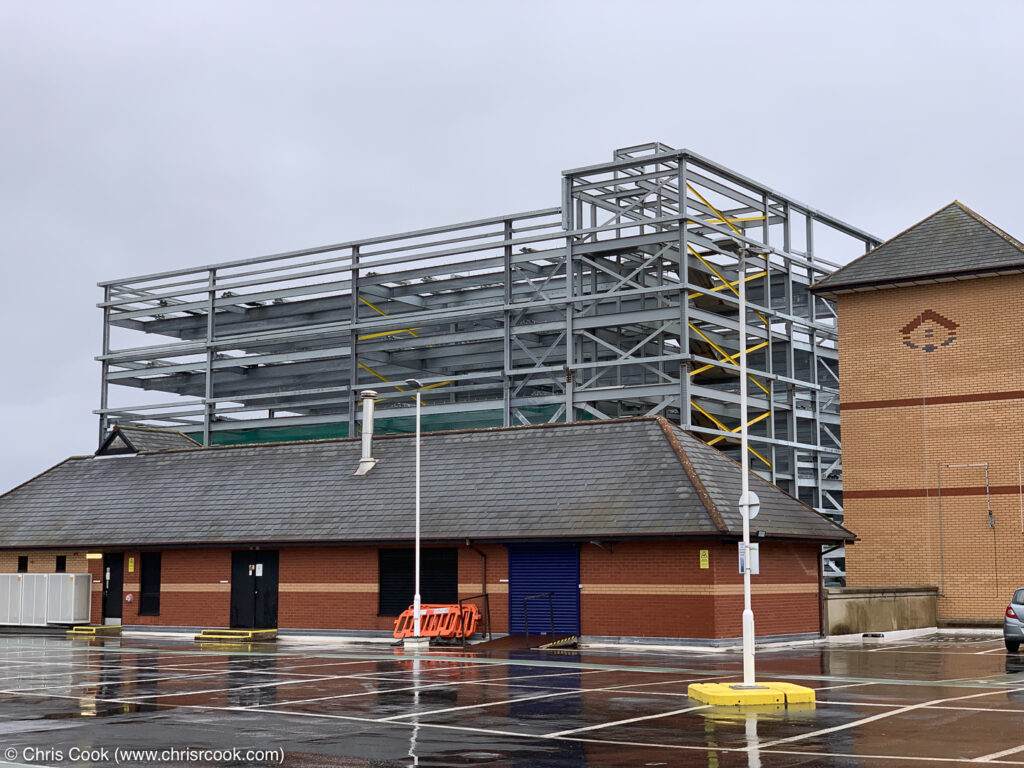
The new car park peaks over the top of the old. I believe that this has topped out and that there are no additional floors to be added.
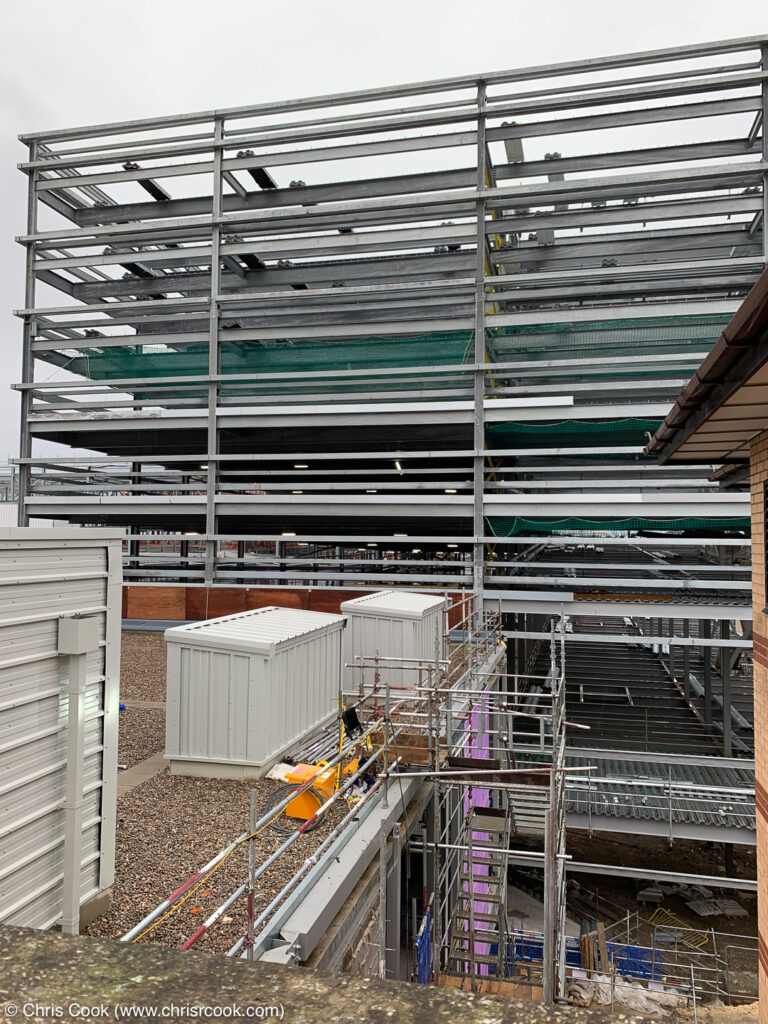
The new car park. The core of the structure appears to be complete however the floors have yet to be installed.
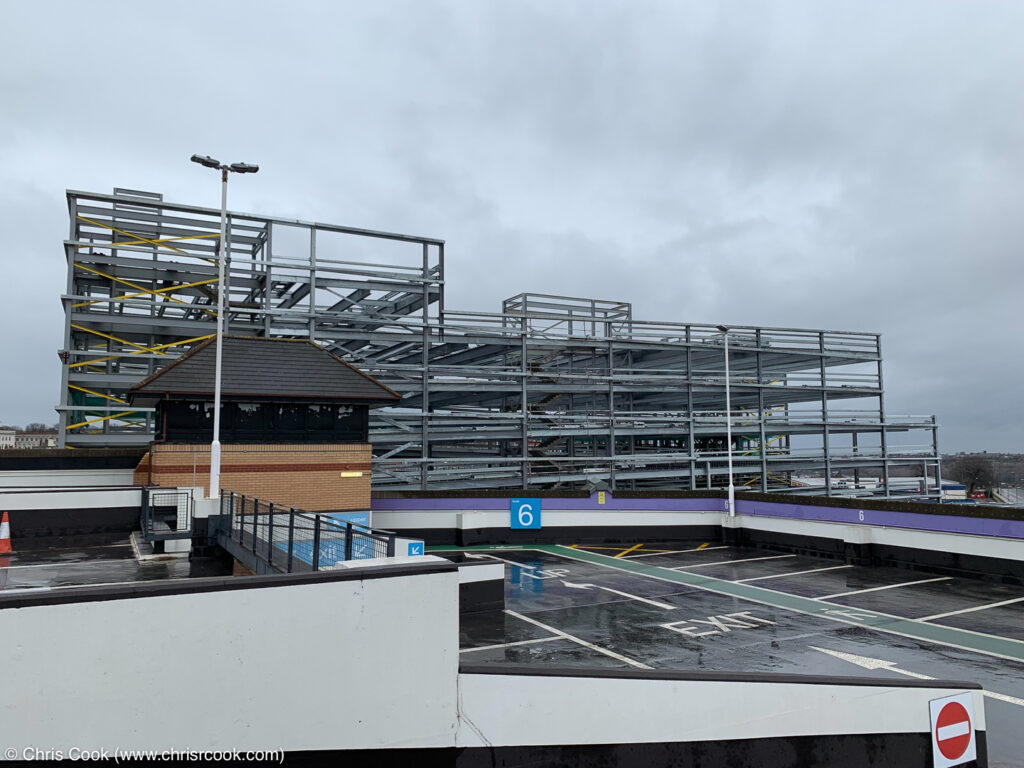
The new Glassworks car park taken from the north-east end of the Alhambra Centre car park. It is significantly taller than anything in the immediate area.
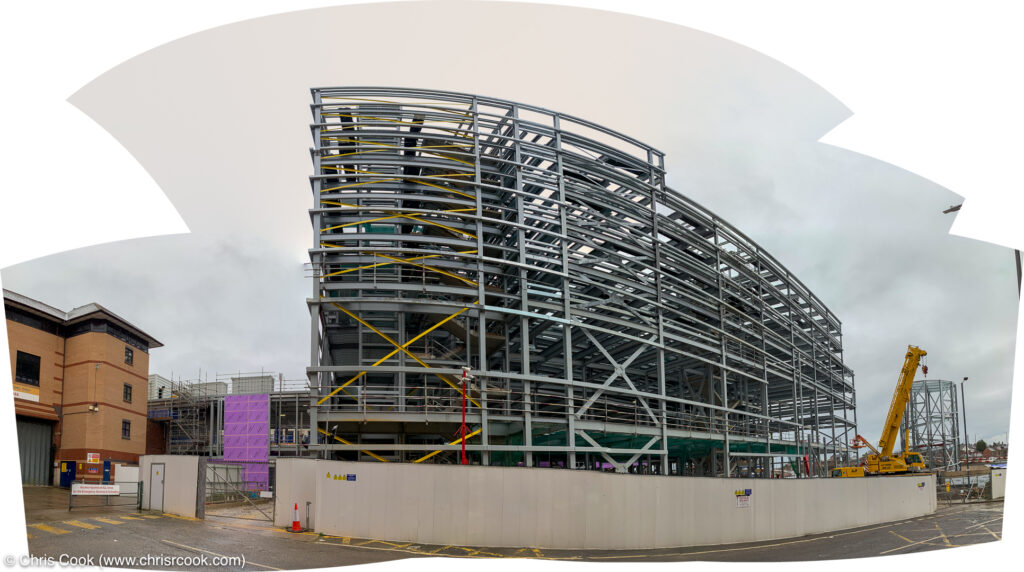
A composite image taken from the Alhambra Centre car park entrance on Lambra Road. With the new structure, Lambra Road is significantly more canyon-like than before.

The east end of the car park and the centre frame for the car parks’ access rotunda.
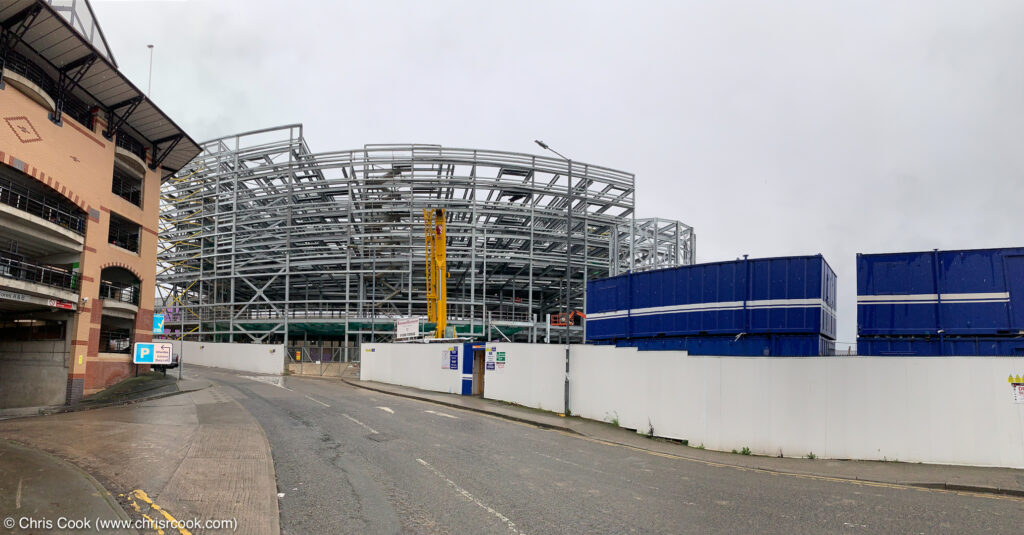
The car park and rotunda. The car park access road will branch from Lambra Road at roughly the point where the left blue site offices are. This branch will also serve as access to the shopping centre’s goods access road.
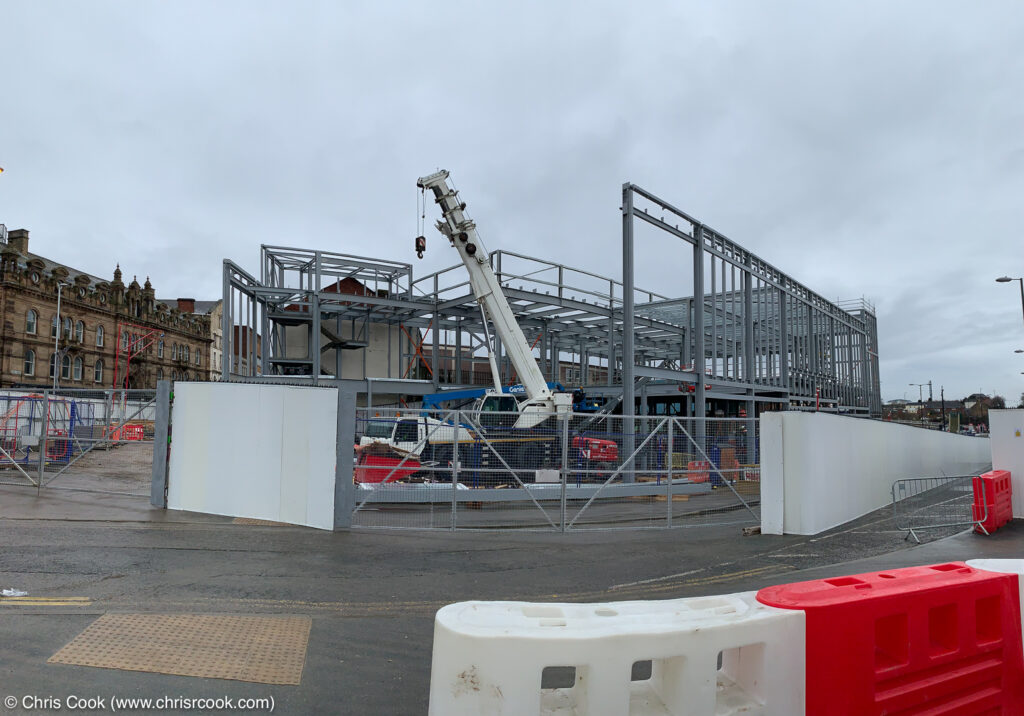
The future bowling alley and restaurants from the west end of Kendray Street. In the past month the steel work has crept west across the site and the first elements of the Eldon Street frontage have been installed. Passage along Kendray Street towards the Interchange has also been reduced to a narrow pedestrian walkway.

A closeup of the bowling alley and restaurants’ structure from Kendray Street.
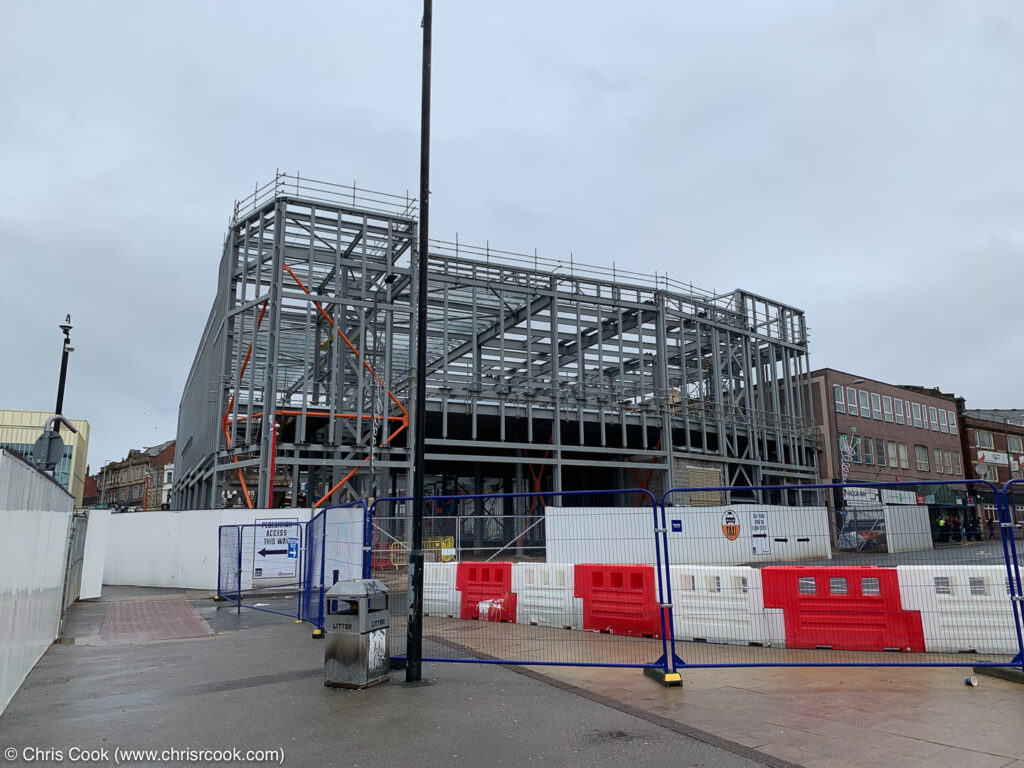
The east end of the bowling alley and restaurants’ structure. This area has now been closed to taxis and will, in the future, be landscaped as a pedestrian area at the west end of the new railway footbridge. The taxi rank will be retained (to the right) on Midland Street with the taxis returning along Midland Street to their destination.

Facing south along Midland Street. To the left is the Interchange. To the right is the structure of the new bowling alley and restaurant complex. Behind is the cinema, shopping centre, and carpark.

The north end of the cinema. This was taken approximately where the former junction to Midland Street from Kendray Street was located.
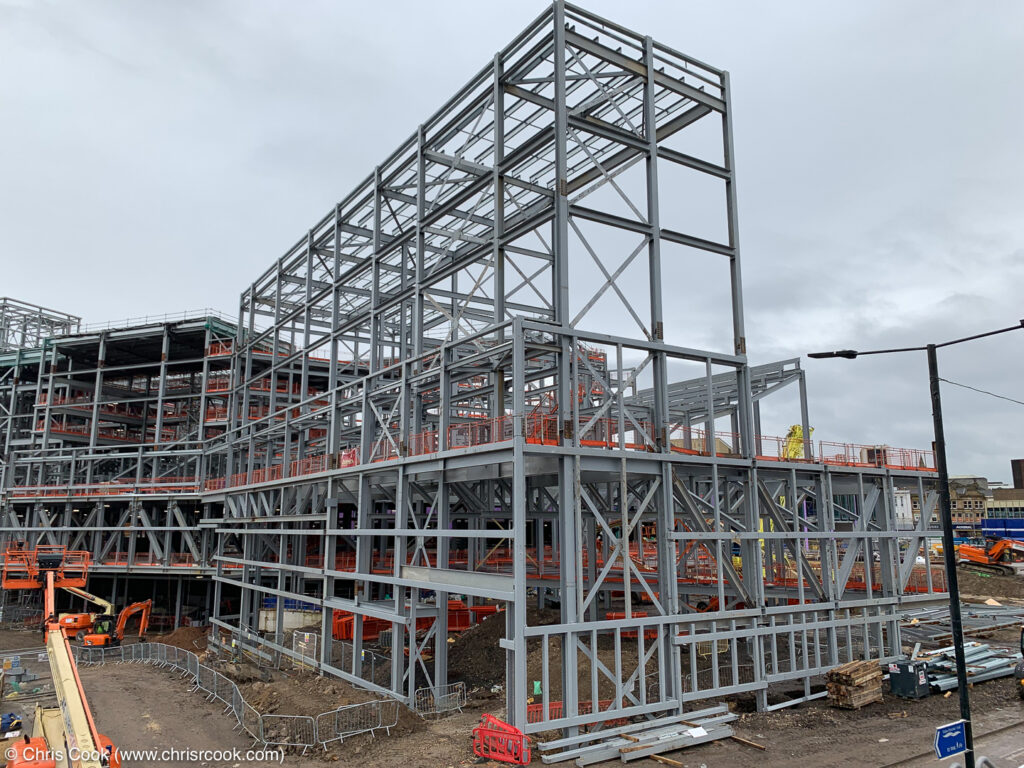
The north end of the cinema with the future access road to the left.
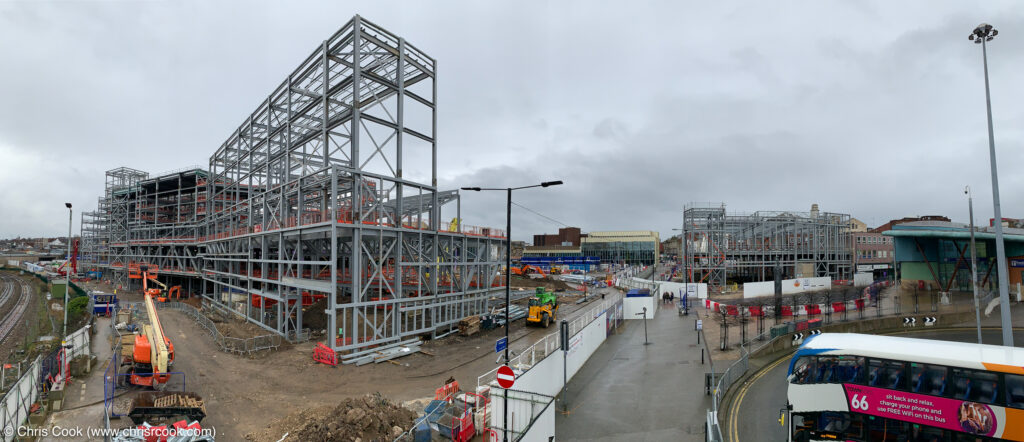
Panorama taken from the pedestrian footbridge over the railway.
From left to right:
- Access road.
- Cinema
- Public square (now partially obscured by the cinema)
- Phase one’s library.
- Bowling alley and restaurant complex.
- Interchange.

The future square and shops – taken from about half way along Kendray Street. Like the shops on Cheapside, there has been very little change here over the past month.
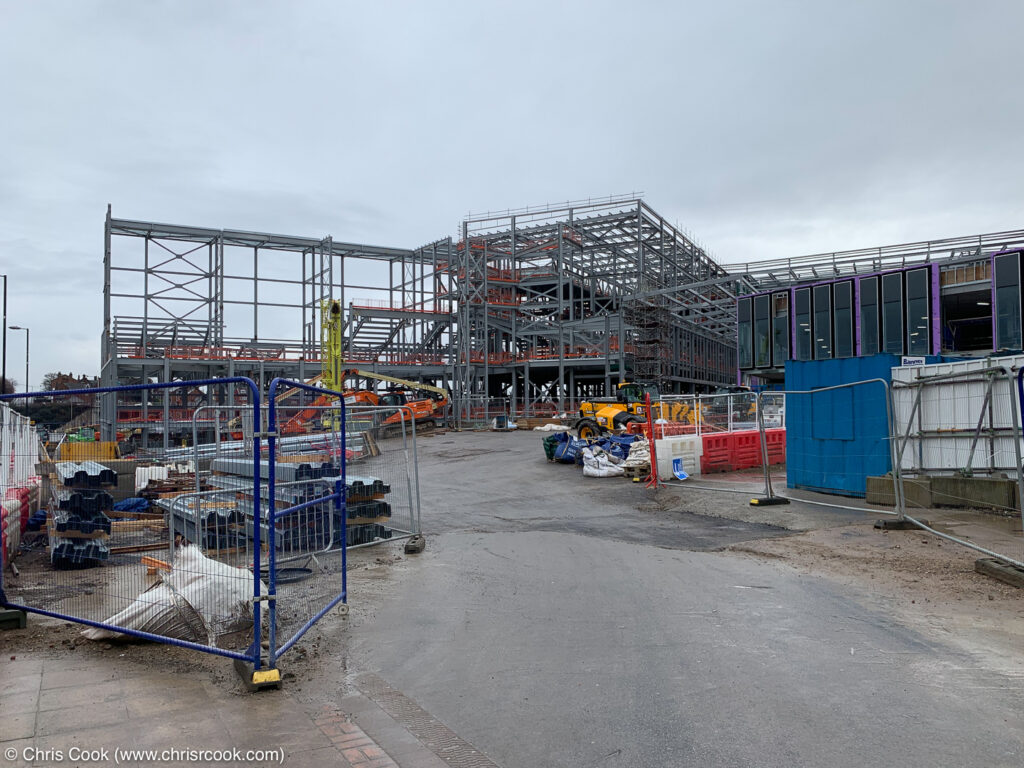
The cinema, square and shops from the west end of Kendray Street. Now that the cinema has started to reach it’s final high you can see just how enclosed the square will be.

A ‘Henry Boot Construction’ information board as displayed on Kendray Street.
Gimme Gimme Gimme… a pipe organ after midnight!
More lunch hour wastage…
Rasputin’s Mighty Organ
Because I’ve not wasted my lunch hour at all…
My Space
whois chrisrcook.com
Domain Name: CHRISRCOOK.COM
Registry Domain ID: 2351378318_DOMAIN_COM-VRSN
Registrar WHOIS Server: whois.google.com
Registrar URL: http://domains.google.com
Updated Date: 2020-01-10T23:13:50Z
Creation Date: 2019-01-10T21:43:23Z
Registry Expiry Date: 2021-01-10T21:43:23Z
Registrar: Google LLC
Registrar IANA ID: 895
Registrar Abuse Contact Email: registrar-abuse@google.com
Registrar Abuse Contact Phone: +1.8772376466
Domain Status: clientTransferProhibited https://icann.org/epp#clientTransferProhibited
Name Server: NS-CLOUD-C1.GOOGLEDOMAINS.COM
Name Server: NS-CLOUD-C2.GOOGLEDOMAINS.COM
Name Server: NS-CLOUD-C3.GOOGLEDOMAINS.COM
Name Server: NS-CLOUD-C4.GOOGLEDOMAINS.COMIt’s a little over a year since I registered Chrisrcook.com and wrote my first post. With that, I think it’s time to look back at the original goals for this site and to share a few thoughts.
The Hardware
I originally decided to use a Raspberry Pi 3B+ as a host. The Pi has performed well and, after a year, I remain happy with that decision and do not plan on moving to another solution. The single caveat to this is that I plan on moving away from using a Micro SD card for permanent storage to a full blown SSD.
In the future I aim to explore PeerTube (or similar) and, at this point, I may have to move to a more powerful board than my now superseded 3B+.
The Software
The Raspbian/Nginx/Jekyll stack has worked well and I plan to continue with this configuration – albeit with a little more automation. My move to SSL via Let’s Encrypt was easy to set up but seemed to upset Google for a month or so. In hindsight, I should have implemented SSL from day one.
The Connection
I continue to use Google as a domain registrar thanks it it’s support for IPv4 Dynamic DNS however I am considering moving to Mythic Beasts both to reduce my dependency on Google and due to their support for Dynamic DNS for both IPv4 and IPv6. As Virgin Media does not yet support a native IPv6 connection this will be a low priority move.
The Virgin Media connection continues to be reliable enough to self host. While the April bounce to upload was nice, I’m not certain that there would have been any material difference if the previous 20Mb/s speed had been maintained. Should I start to self host video (rather than use Youtube) then I suspect additional upload will be required.
The Content
Jekyll has worked well for me; I produce a reasonably modern site without the hassles of maintaining a WordPress (or otherwise) stack. Personal and professional commitments mean that I have not been able to update as often as I would like; there are a number of projects and a number of images I would like to have uploaded that I have not yet had chance too. In spite of this lack of content, I remain happy that I have control of content availability and location.
Roundup
All in all, I believe this has been a good first year and, barring any unforeseen circumstances, I plan on continuing to run chrisrcook.com into the 2020s.
Blue Monday
The only Blue Monday worth thinking about.
Addendum:
This is kinda funky too…
The Apple Memory Hole
The (Unofficial) Apple Archive is a newly launched collection of historic Apple media and video.
It must have been a tremendous amount of work collect and catalogue and, for me, the most interesting years are 2004 and 2005 – the years that lead me to purchase my first Mac (and yes, I did buy into PPC after the intel transition was announced!). I doubt it’ll last – Apple’s lawyers must be itching to write takedown notices – but while it’s there it’s an interesting place to poke around.
I still have that old first machine somewhere and I should dig it out; last time I checked (perhaps 5 years ago) it seemed to run ok. I do hope it’s still in something of a functional state.
New Year, New Steel: A Glassworks Update
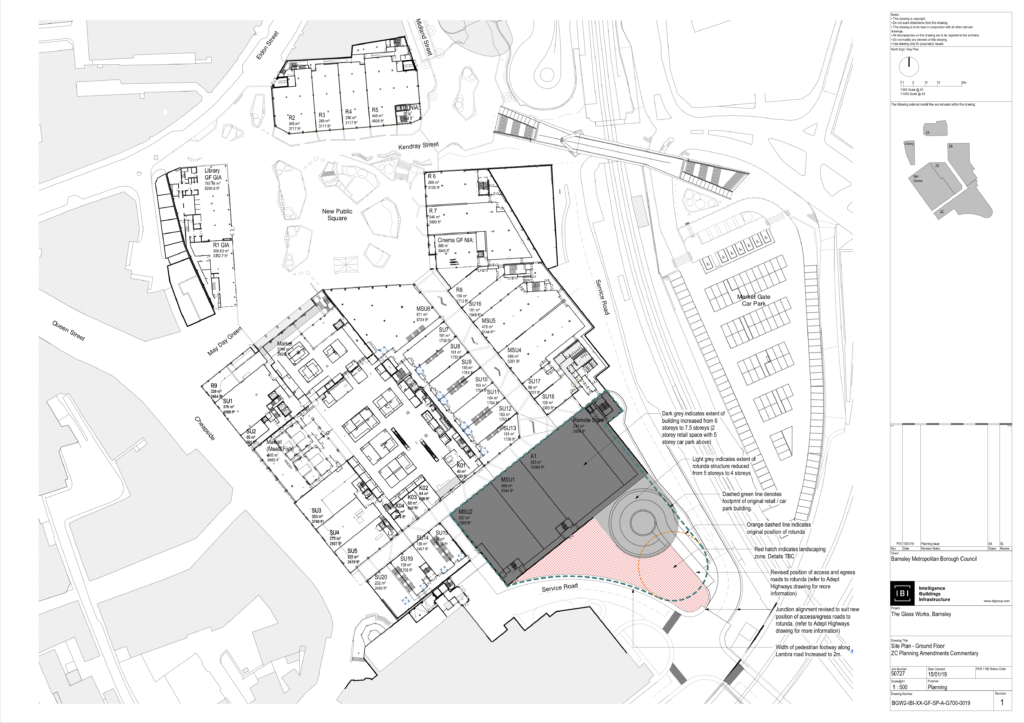
A post Christmas update on the Glassworks development in Barnsley. A fair bit has happened since my last update in November; the mild winter weather and weekend working has allowed the installation of the steelwork to continue apace.
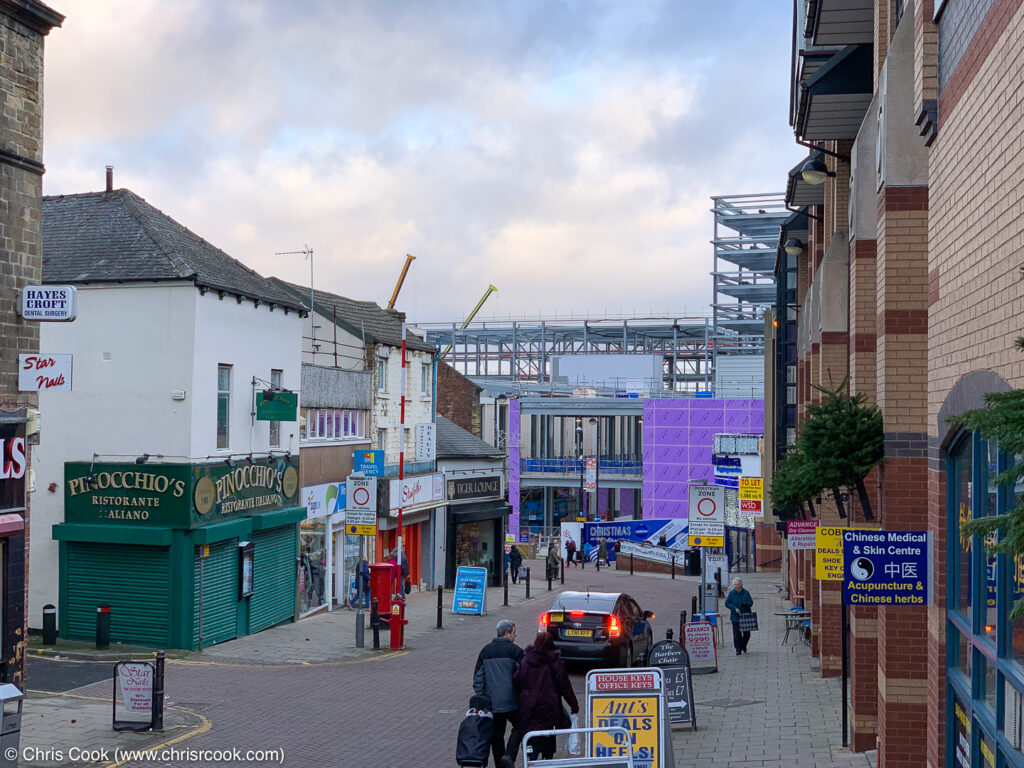
The now customary long shot of the south-west entrance taken from the Cheapside Hill. From this location the most visible change has been the installation of the purple insulation on the building by the entrance. Behind, we can see the increasing bulk of the car park (right) and the upper levels of the cinema (centre and left). Cheapside itself remains somewhat tired looking.
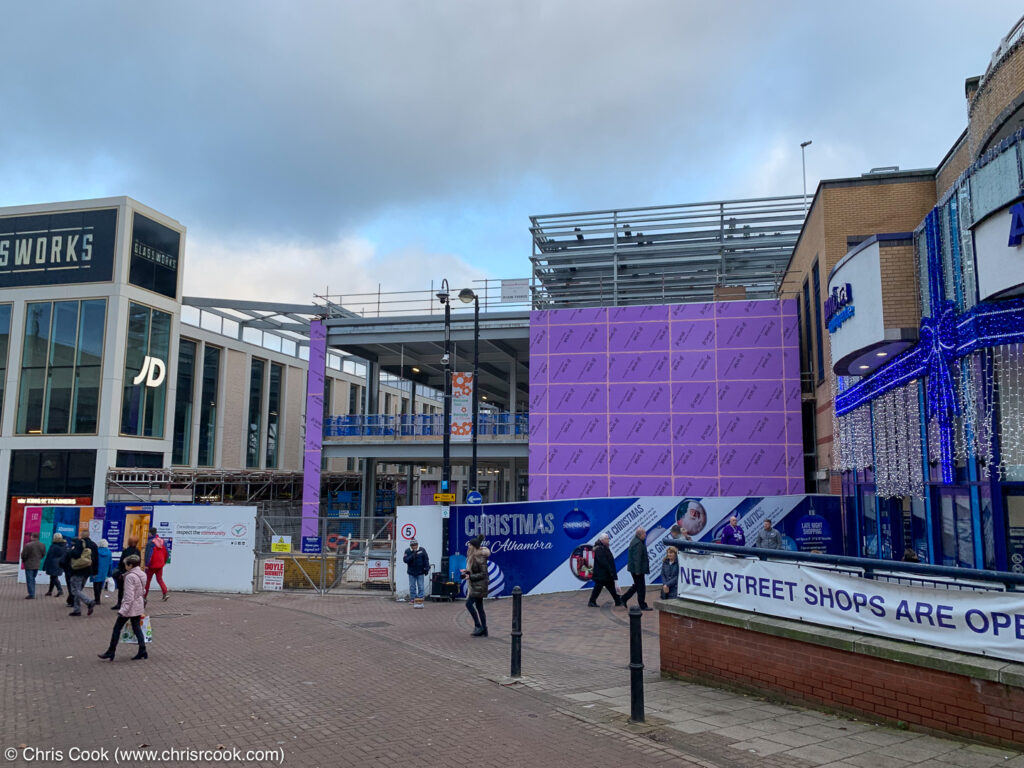
A closeup of the Cheapside steelworks. With a Q1 2021 target for opening it won’t be long before they start to install the external cladding. It’s also worth noting that the framing for the roof of the covered arcade appears to be just awaiting its glass.

The bowling alley and restaurants from the north side of Kendray Street. The steelwork continues to creep towards the Eldon Street end of the site. The bowling alley is to be run by Superbowl UK.

The bowling alley site frame from the corner of Kendray Street and Midland Street.
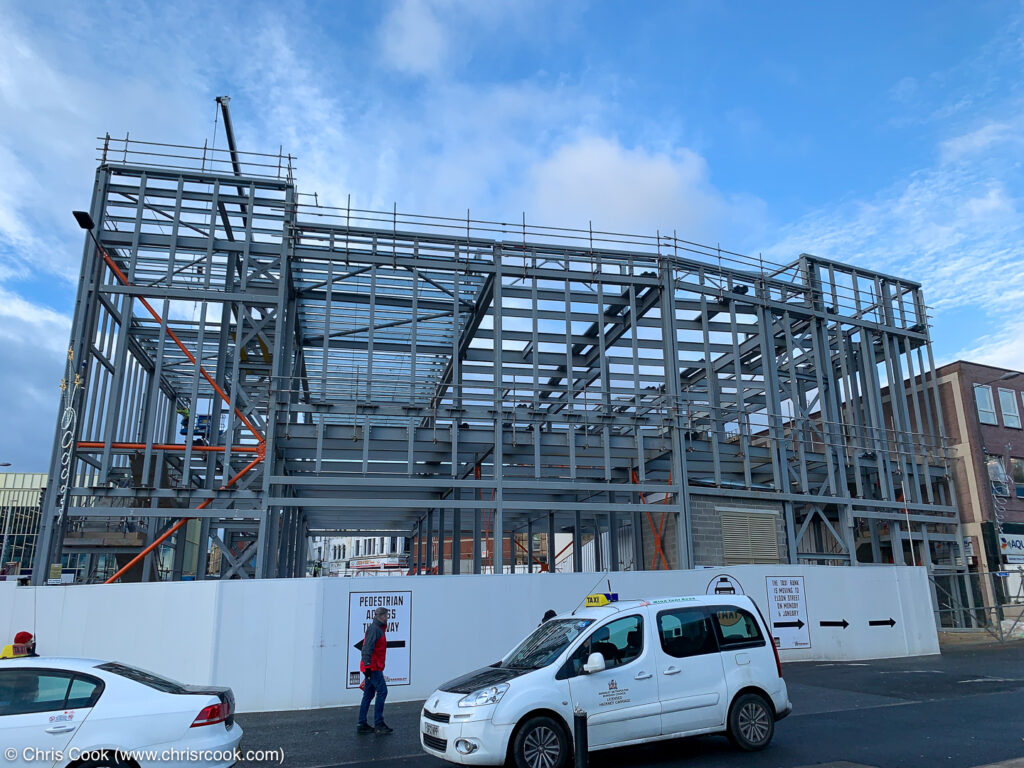
The bowling alley site from Midland Street. On completion of the project, Midland Street will be closed to traffic south of where the grey breeze block utility shed is located. A smaller plaza – bound on the north by Midland Street/Barnsley Interchange, the east by a new pedestrian footbridge over the railway, the south by the cinema and the west by the bowling alley – will cover the former road.

Saturday working on the bowling alley steel.
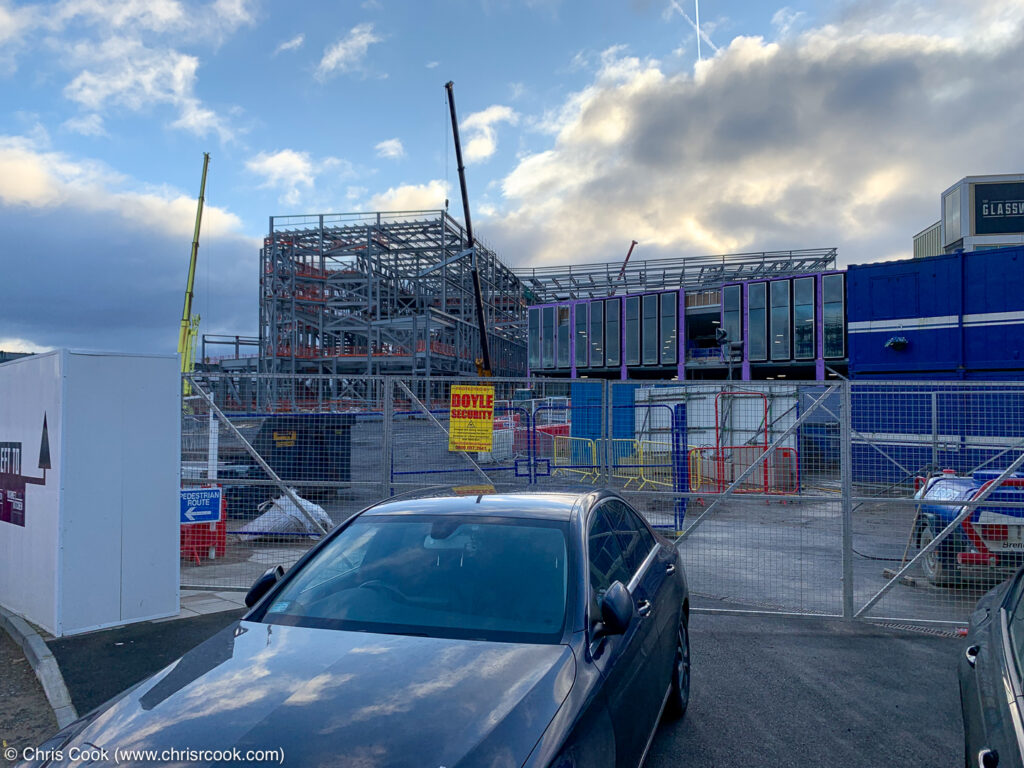
The site of the future public square is now level with the surrounding area. Behind and to the right you can see both newly installed windows and the continued installation of insulation on the west side of the new arcade. To the left, the east flank of the shopping centre/cinema continues to crawl north. In the rear centre, the structural steel for the roof of the arcade has been installed, linking both side of the arcade. At the back looms the structure of the carpark.

A slightly closer shot. The structure for the arcade roof is clearer here.

Steelwork being craned into place. You start to get a feel for just how parts of the site will loom over those at ground level.

Saturday working on the cinema end of the main site. Plans indicate there is still quite a lot of structure left to install here.
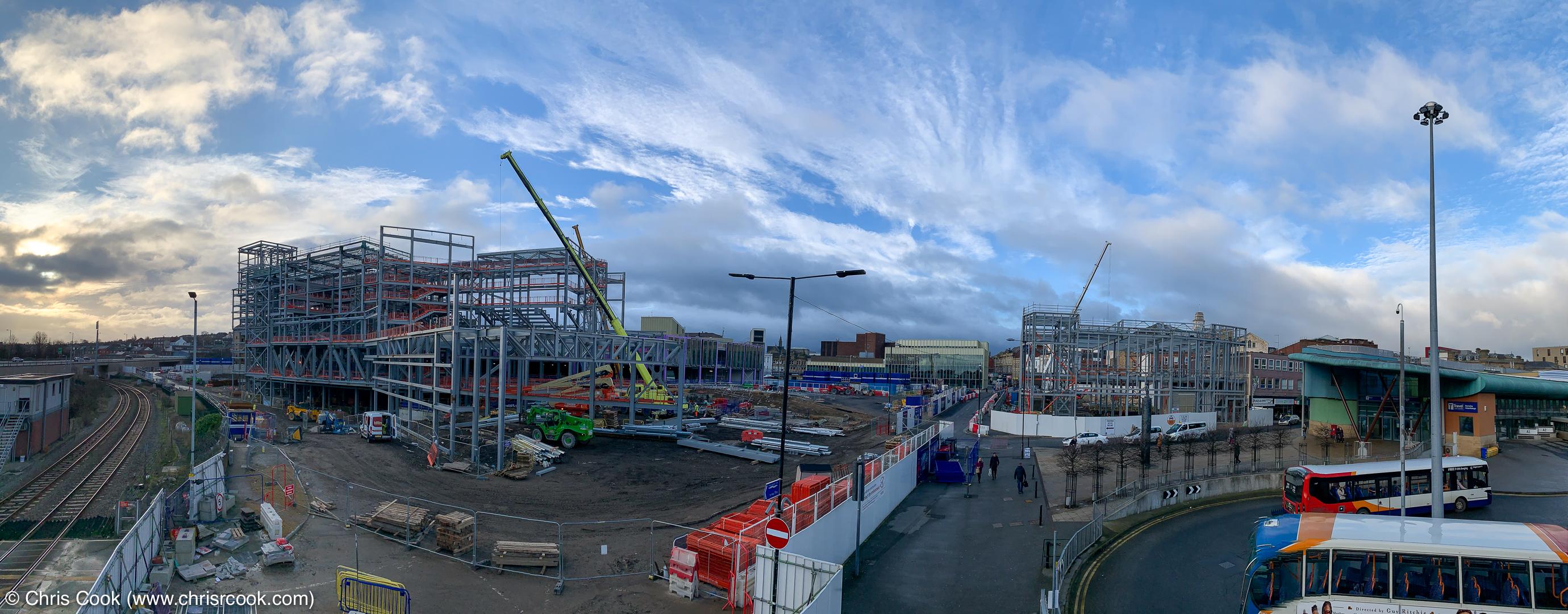
A panorama of the site.
From left to right:
Cinema/restaurants/shops structure
(Back) Shops structure
(Middle) Location of new public square
(Front) Future location of the west end of the new footbridge over the railway
Completed library
Kendray Street
Bowling alley and additional restaurants
Existing transport hub
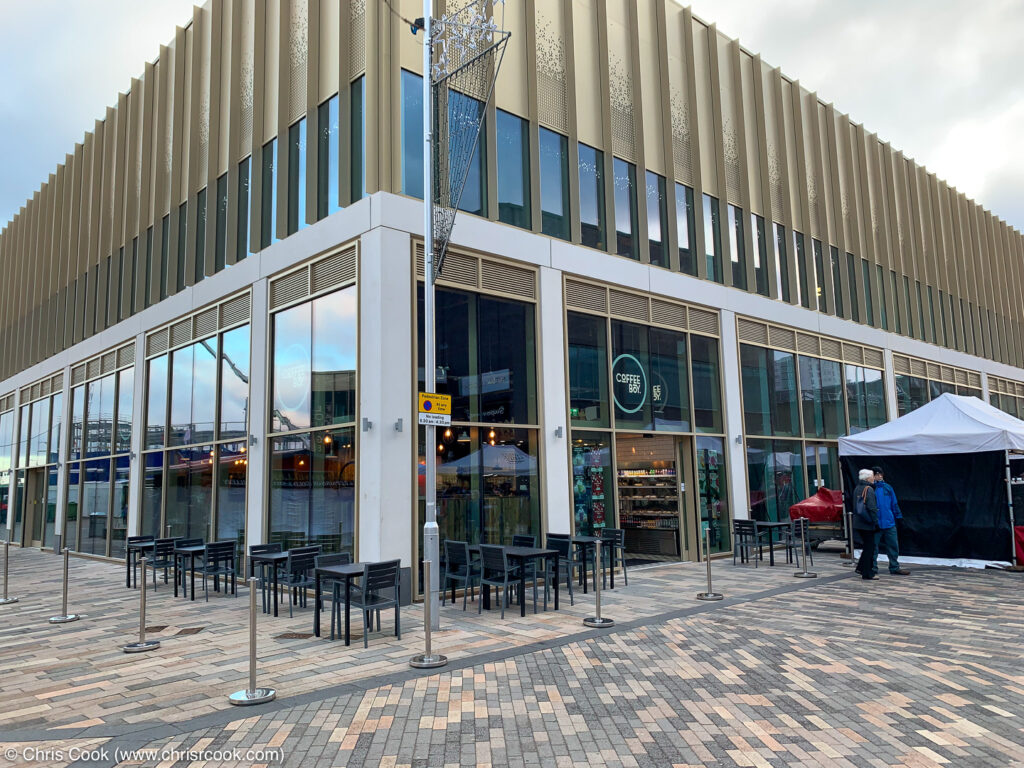
Coffee Boy, a new occupant of phase one situated on the corner of May Day Green and Cheapside. It appears to be a minor coffee franchise with a Starbucks feel. I cannot vouch for the quality of the coffee.
Baddesley Clinton Hall (Summer 2018)
More photographs, this time a set from Baddesley Clinton Hall taken in Summer 2018.
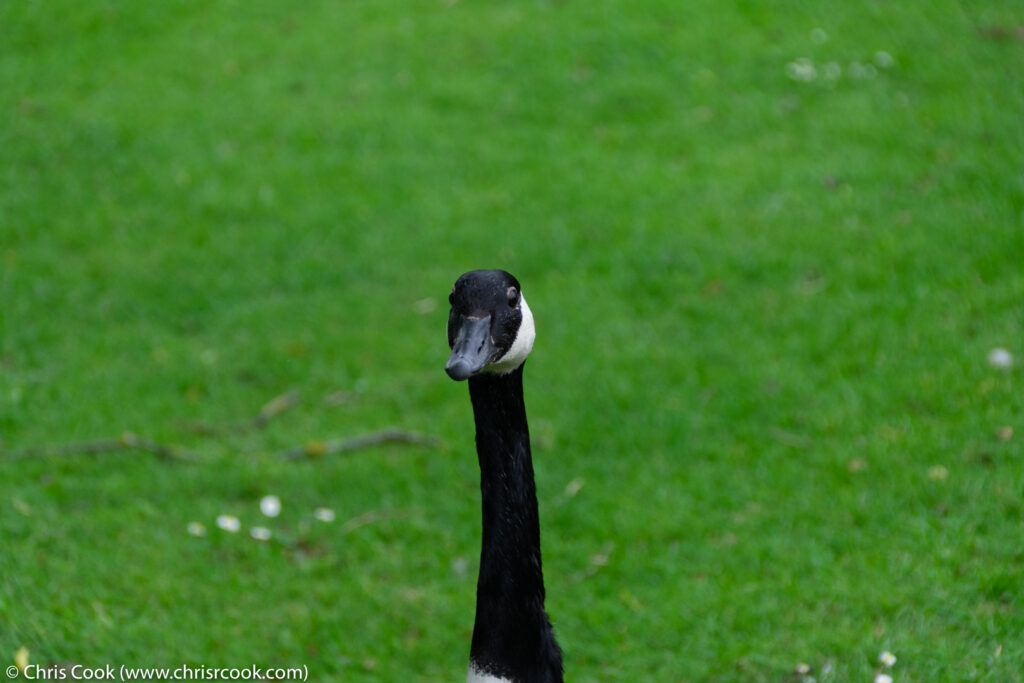
Dalcairney Falls in December
Video of Dalcairney Falls in South Ayrshire that I shot in early December 2019.
It was grey day (probably too grey!) with poor light (and I’m still figuring out DaVinci Resolve!) but I certainly don’t think it’s the worst piece of footage on YouTube.